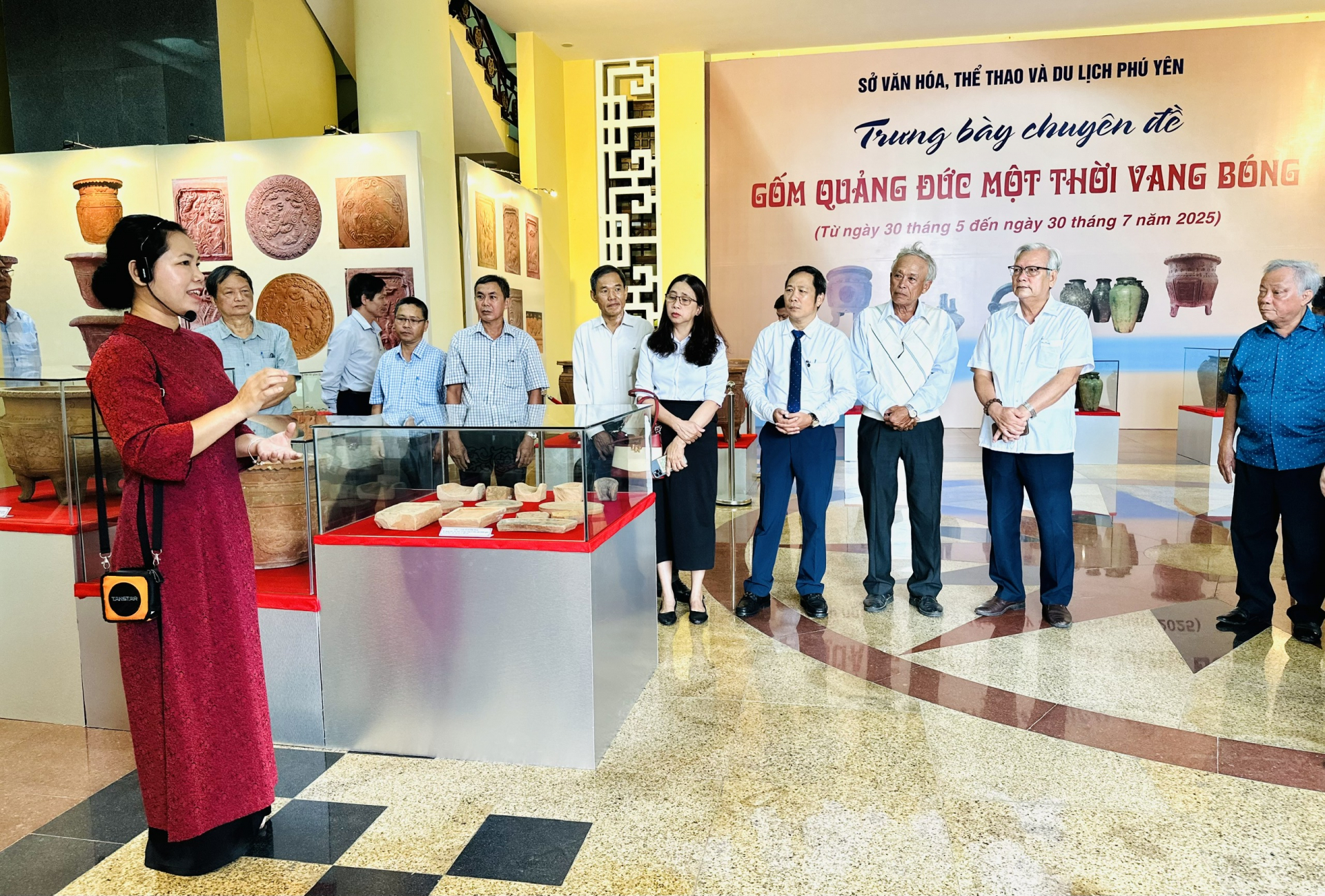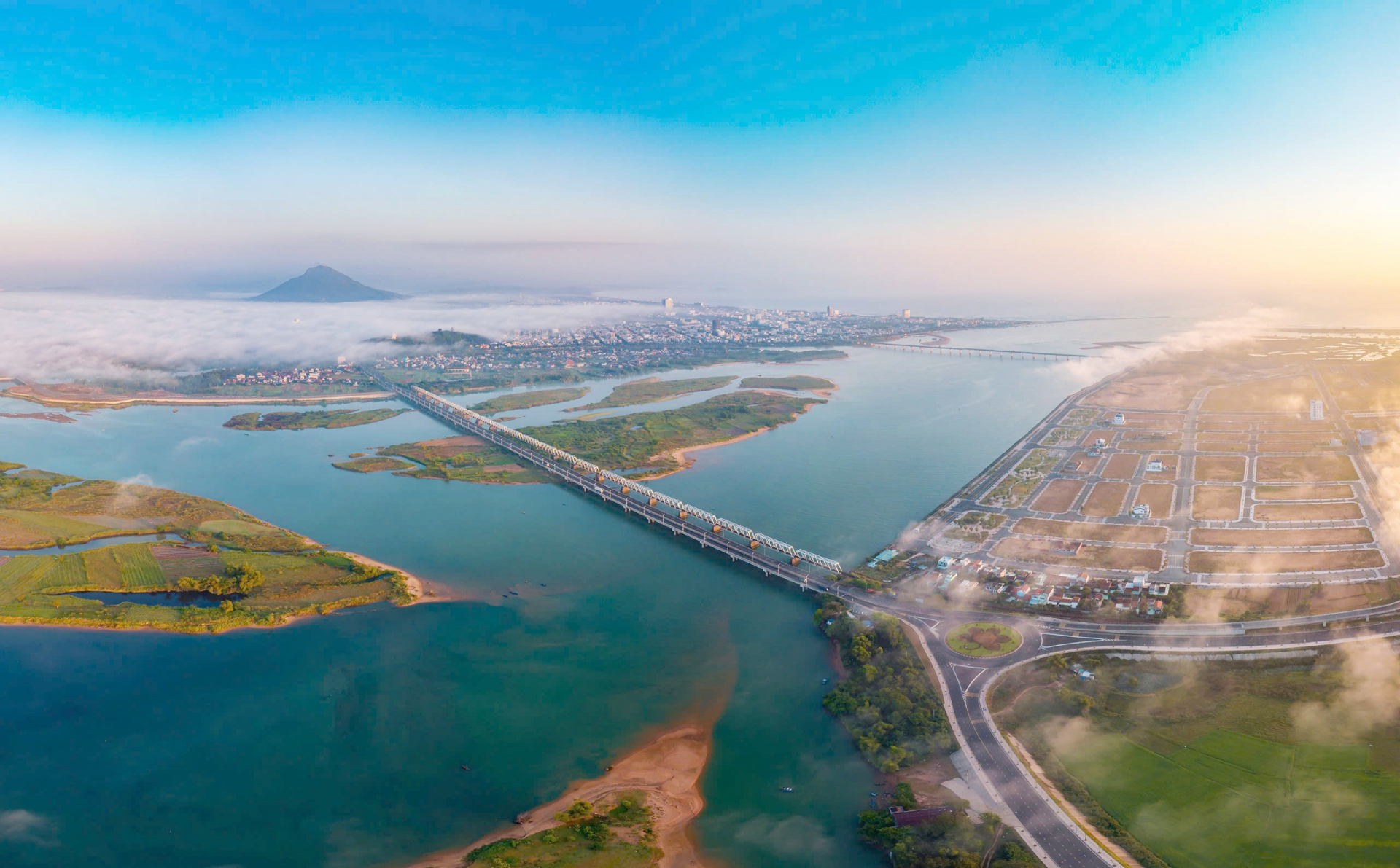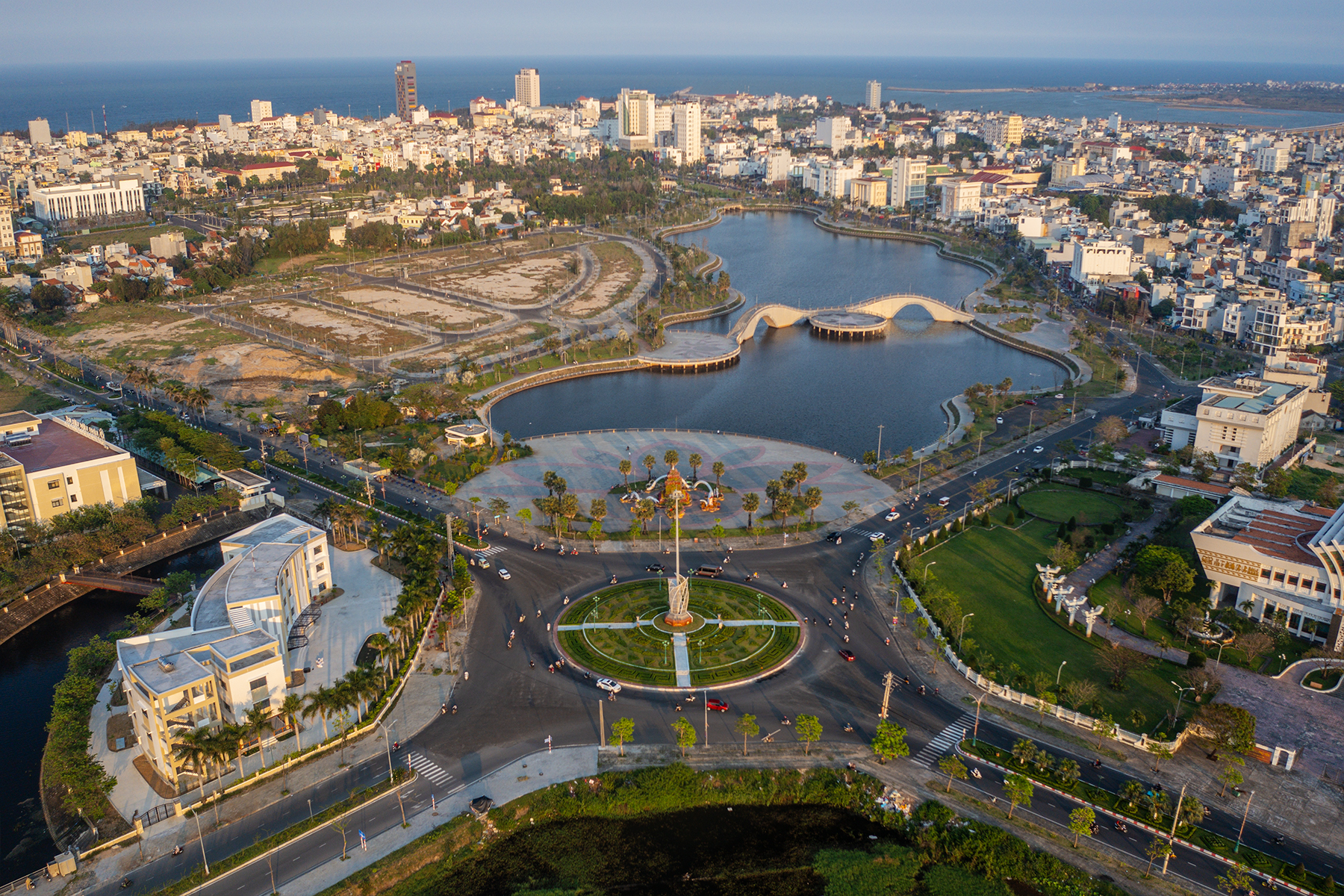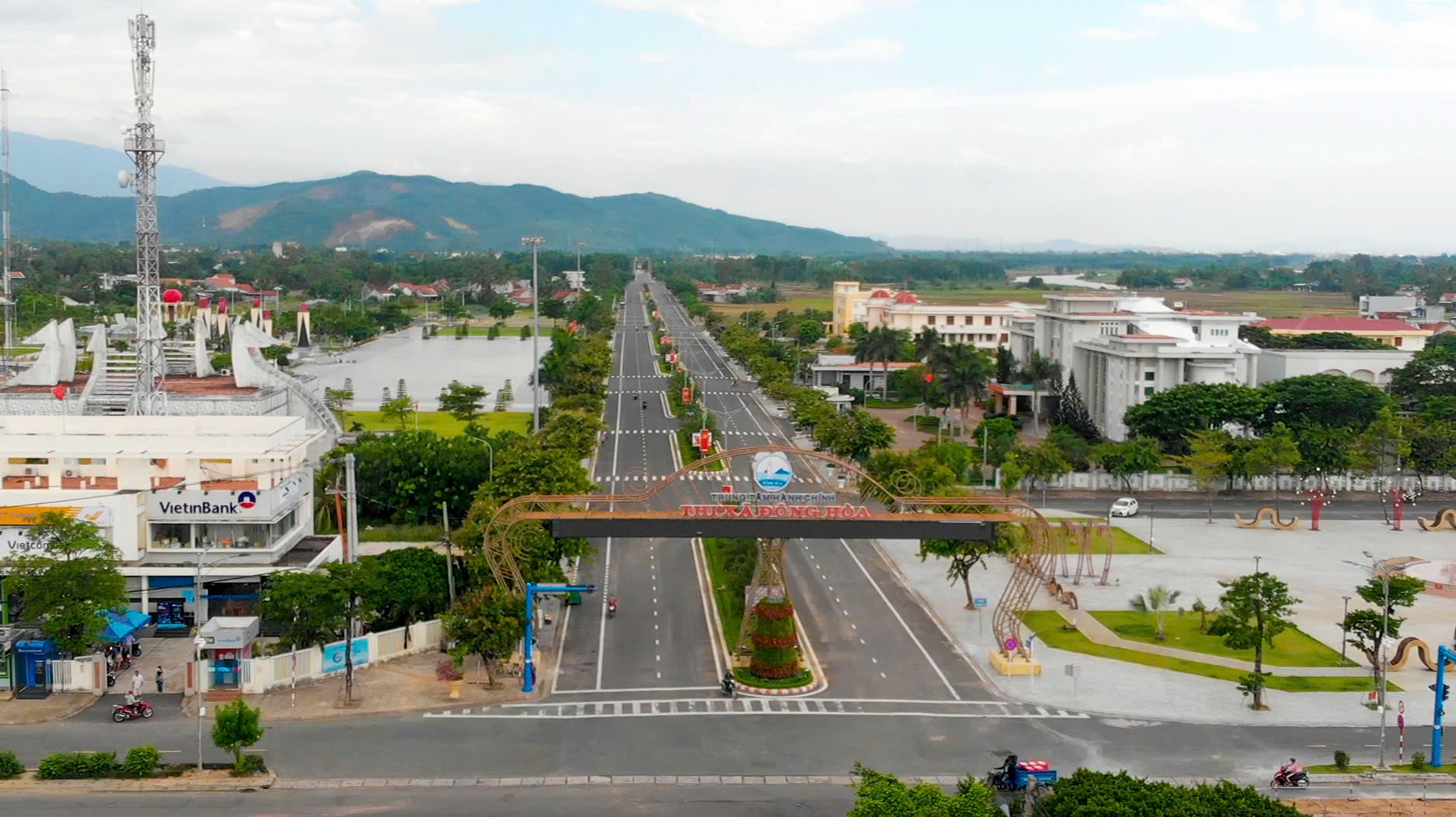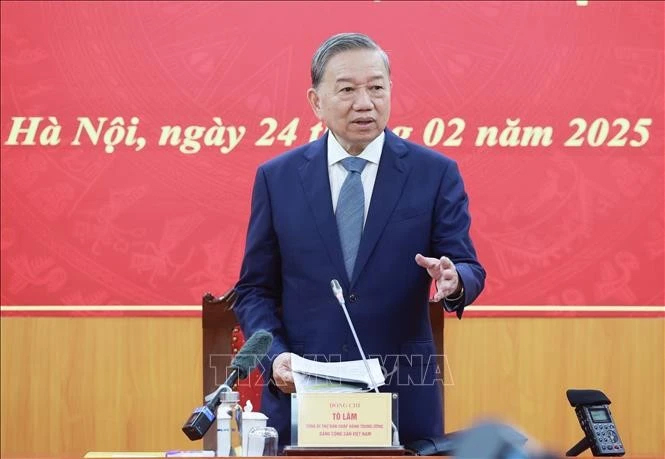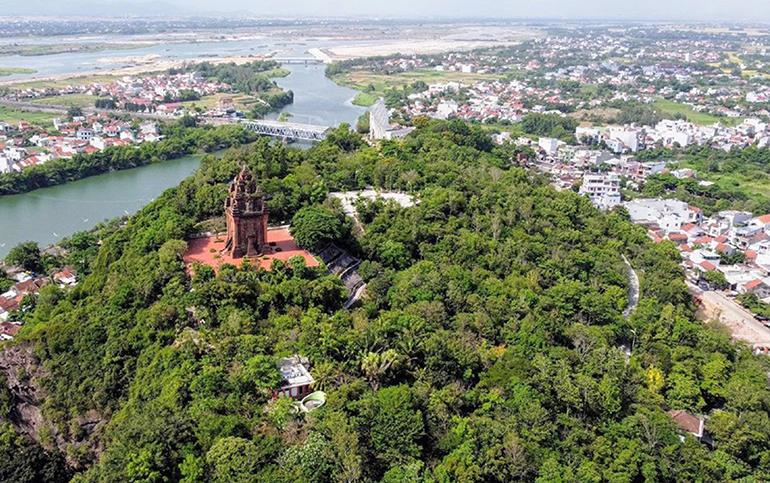Phu Yen is a land with a rich history of over 415 years associated with the journey of opening up the land of ourancestors. Phu Yen’s culture unique is the interwoven, harmonious fusion of Vietnamese and Cham culture. Particularly, the driving force and internal resources for the province's development are the heroic revolutionary tradition, self-reliance, resilience, dynamism, creativity, pride and the aspiration to thrive and build a prosperous homeland.
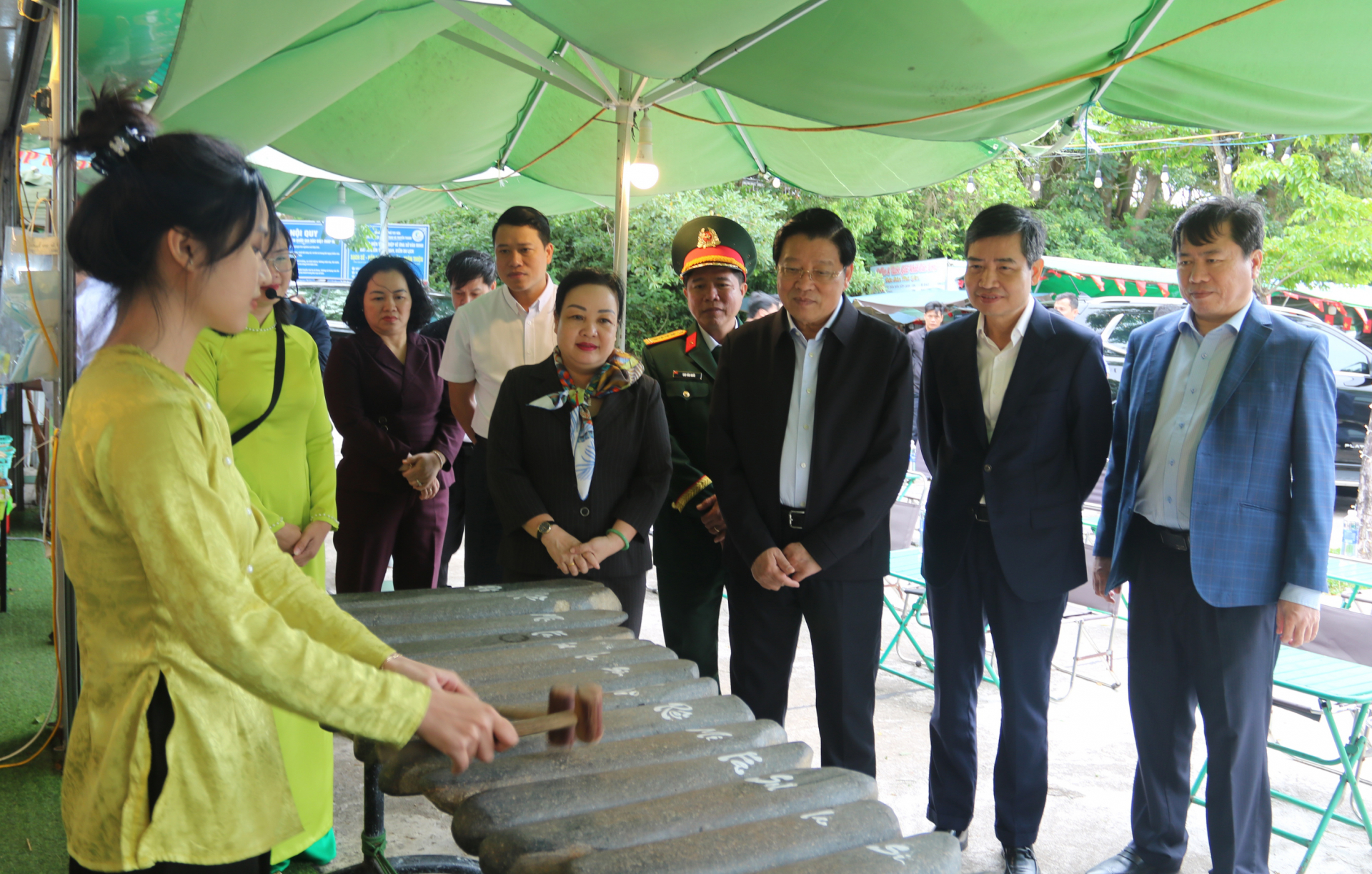 |
| Comrade Phan Dinh Trac, Politburo member, Secretary of the Party Central Committee, and Head of the Central Committee for Internal Affairs, together with leaders of Phu Yen provincial Party Committee, enjoying a performance of Phu Yen lithophone at Nhan Tower- a Special National Relic. |
The cultural uniqueness of Phu Yen
The name “Phu Yen” emerged during the era of Lord Nguyen Hoang. Prior to that, it was part of the Hoa Anh kingdom (present-day Phu Yen and Khanh Hoa) and the Nam Ban kingdom (the Central Highlands), during Emperor Le Thanh Tong’s 1471 southern campaign to pacify the Cham people. The name "Phu Yen" was chosen by the ancestors to encourage settlement and promote the idea of prosperity and peace in the newly reclaimed land ("Phu" meaning wealth and "Yen" meaning peace). Poet Quach Tan once wrote of this land: "Fertile land, diligent people, intellect of Phu/ Gentle, modest character, dwell in Yen".
Phu Yen is a strip of land with a turbulent history from the late 15th century to the early of the 19th century. It has been 416 years since the initial migration led by Luong Van Chanh, under the directive of Lord Nguyen, crossed Cu Mong pass, the southern part of Tuy Vien district (Binh Dinh today) to expand southwards (The decree of Governor Nguyen Hoang to Phu Nghia Marquis Luong Van Chanh in 1597 is still preserved at Luong Van Chanh temple in Phu Yen).
Besides, Phu Yen is also known as a land of cultural depth. The province has 23 national historical and cultural relics and more than 50 provincial cultural relics in the community of 34 ethnic groups. Several landmarks are tied to the names of historical figures: Da Bia mountain associated with Emperor Le Thanh Tong’s southern expansion; the Temple of Patriot Le Thanh Phuong; An Tho citadel, birthplace of Tran Phu - the first General Secretary of the Communist Party of Vietnam; and Chop Chai mountain, where Phu Yen's army and people once rescued Lawyer - Chairman Nguyen Huu Tho.
Unique cultural heritages such as folk songs of Bai Choi (along with some provinces of the South Central Coast recognized by UNESCO as intangible cultural heritage of humanity), Ho Ba Trao chants and Go Thi Thung horse racing… all contribute to Phu Yen’s distinct identity. The province is also home to rare and ancient artifacts like the Tuy An stone and lithophone ensembles dating back approximately 2.500 years, the double drum, triple gong, and five gong. Traditional crafts also thrive here, including fish sauce making, seashell and coconut shell handicrafts… Phu Yen’s cuisine is just as rich and diverse, offering specialties like half-dried beef, tuna eyes, Song Cau “oc nhay” (jumping snails), blood cockles, and O Loan oysters…
Phu Yen is often likened to a vast chamber, to the north is Cu Mong range,the border between Binh Dinh and Phu Yen, where the famous Ma Do tea variety is found.To the south is the Dai Lanh range, the border between Khanh Hoa and Phu Yen, with Thach Bi mountain known as "foremost southern pillar" (an 80-meter-tall rock slab visible from afar).To the west is a semi-mountainous area, gradually rising and bordering the Central Highlands; there is also the Van Hoa plateau with a cool climate, nicknamed "Da Lat of the coastal region".To the east is 189km of coastline stretching from Xuan Dai bay to Hon Nua islet, creating a wild and majestic natural picture, attracting tourists.
With its harmonious blend of rivers, mountains, plains, and sea, nature has generously endowed Phu Yen with a wealth of resources and advantages.
Moreover, the people of Phu Yen are simple, gentle, hospitable, and loyal… considered a unique “cultural hallmark” of the land. Throughout historical periods, generations of Phu Yen people have continuously strived to overcome difficulties, hardships, and sacrifices to protect and develop this beloved land.
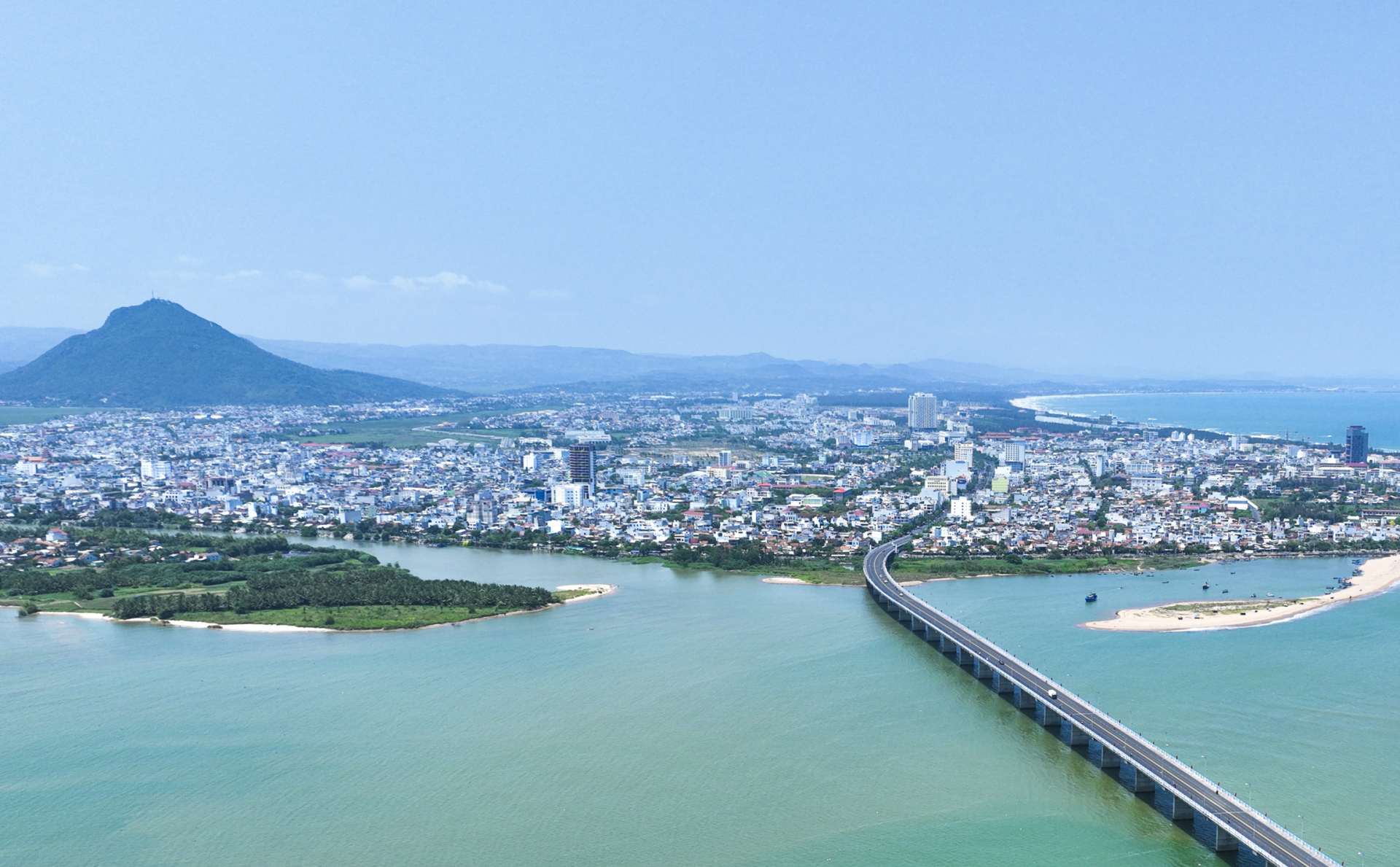 |
| Phu Yen land with over 415 years of formation and developmenthas left an enduring legacy in the historical journey of Vietnamese nation. The photo: Tuy Hoa city, nestled along Da Rang river, is steadily growing into a modern urban area. |
Harnessing the Inner strength of culture
The 13th National Party Congress affirmed: “Vietnamese culture and people are the foundation and a crucial endogenous force ensuring sustainable development. Building a comprehensively developed Vietnamese person, harmoniously combining traditional and modern values”, is a top priority for rapid and sustainable national progress.General Secretary To Lam also emphasizes: “Culture is a unique product of humanity, of the nation. Preserving and promoting cultural strength is a responsibility every country must embrace, as it directly impacts social development, enriches people’s spiritual life, and enhances the effective functioning of the state”.
In line with these directives, Phu Yen province has actively implemented many initiatives to preserve and promote cultural heritage associated with tourism development, contributing to preserving the nation's fine traditional cultural values, improving the quality of people's lives. A key factor Phu Yen has identified for sustainable development is human capital. People are not only beneficiaries of development, but also its central driving force.During the 2020–2025 term, in addition to building a capable and mission-ready cadre of officials at all levels, the province also implementedthe action program on human development. Its goal is to develop Phu Yen people comprehensively associated with knowledge development, physical development, moral qualities, and knowledge of social skills.
The merger of Phu Yen and Dak Lak opens up new developmental opportunities, but it has also raised concerns that the cultural identity of Phu Yen might be diminished. In reality, this union is not about losing identity - but about elevating it. It is not a matter of erasing history, but of writing a new, more expansive, and more ambitious chapter. The aspiration to build a rich, sustainable homeland deeply rooted in cultural identity has been the dream of many generations. Now, that dream burns brighter than ever - as the combined aspirations of two regions fuse into one, generating a stronger, more dynamic collective force, as General Secretary To Lam has conveyed.
Culture can only become a true inner strength when each citizen contributes to the common cause of development, enhancing the value and effective use of existing resources.To ensure that the cultural and historical beauty of Phu Yen continues to shine, every resident must join hands in preserving and promoting it. When love for national culture and love for the homeland are nurtured and widely spread, each person becomes a cultural ambassador -carrying the responsibility to protect and elevate the cultural identity of this cherished land to truly become a spiritual foundation and driving force for development in the new era - the era of national growth.


